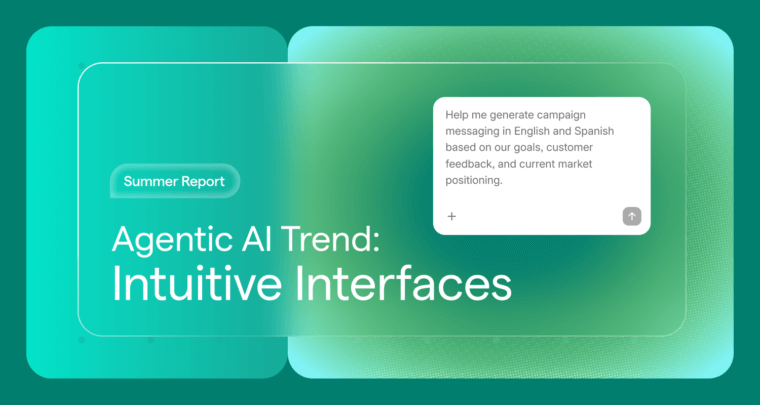
In the fascinating world of AI, reinforcement learning stands out as a powerful technique that enables machines to learn optimal behaviors through trial and error, much like how humans and animals acquire skills in the real world.
Table of contents
- What is reinforcement learning?
- RL vs. supervised and unsupervised learning
- How reinforcement learning works
- Types of reinforcement learning
- Applications of reinforcement learning
- Advantages of reinforcement learning
- Disadvantages of reinforcement learning
What is reinforcement learning (RL)?
Reinforcement learning (RL) is a type of machine learning (ML) in which an agent learns to make decisions by interacting with its environment. In this context, the agent is a program that makes decisions about actions to take, receives feedback in the form of rewards or penalties, and adjusts its behavior to maximize cumulative rewards.
Machine learning is a subset of artificial intelligence (AI) that uses data and statistical methods to build programs that mimic human reasoning rather than relying on hard-coded instructions. RL is directly inspired by how people use trial and error to optimize their decisions.
Reinforcement vs. supervised and unsupervised learning
In supervised learning, models are trained using labeled data, where the correct output is provided for each input. This guidance helps the model make accurate predictions when it’s faced with new, unseen data. Supervised learning is useful for tasks like spam detection, image classification, and weather forecasting.
On the other hand, unsupervised learning works with unlabeled data to find patterns and groupings. It can cluster similar data points, find associations between items, and reduce data complexity for easier processing. Examples include customer segmentation, recommendation systems, and anomaly detection.
Reinforcement learning is distinct from both. In RL, an agent learns by interacting with its environment and receiving positive or negative feedback. This feedback loop enables the agent to adjust its actions to achieve the best possible outcomes. RL is particularly useful for tasks where the agent needs to learn a sequence of decisions, as in game playing, robotics, and autonomous driving.
How reinforcement learning works
Understanding the principles of RL is crucial for grasping how intelligent agents learn and make decisions. Below, we’ll explore the key concepts and the RL process in detail.
Key concepts in RL
RL has a distinct vocabulary that doesn’t apply to other types of ML. The primary notions to understand are:
1 Agent and environment: The agent is the decision-making computer program, while the environment encompasses everything the agent interacts with. This includes all possible states and actions, including prior decisions made by the agent. The interaction between the agent and the environment is the core of the learning process.
2 State and action: The state represents the agent’s current situation at any given moment, and an action is a decision the agent can make in response to its state. The agent aims to choose actions that will lead to the most favorable states.
3 Reward and punishment: After taking an action, the agent receives feedback from the environment: if positive it’s called a reward, if negative, a punishment. This feedback helps the agent learn which actions are beneficial and which should be avoided, guiding its future decisions.
4 Policy: A policy is the agent’s strategy for deciding which action to take in each state. It maps states to actions, serving as the agent’s guide to achieve the best outcomes based on past experiences.
5 Value function: The value function estimates the long-term benefit of being in a certain state or taking a certain action. It helps the agent understand the potential future rewards, even if it means enduring a short-term negative reward to maximize long-term gain. The value function is essential for making decisions that optimize cumulative rewards over time.
The RL process
While the purpose and learning method are quite different from other types of ML, the process is similar in terms of preparing data, choosing parameters, evaluating, and iterating.
Here’s a brief overview of the RL process:
1 Problem definition and goal setting. Clearly define the problem and determine the agent’s goals and objectives, including the reward structure. This will help you decide what data you need and what algorithm to select.
2 Data collection and initialization. Gather initial data, define the environment, and set up the necessary parameters for the RL experiment.
3 Preprocessing and feature engineering. Clean the data: spot-check, remove duplicates, ensure you have the proper feature labels, and decide how to handle missing values. In many cases, you’ll want to create new features to clarify important aspects of the environment, such as creating a single positioning data point from several sensor inputs.
4 Algorithm selection. Based on the problem and environment, choose the appropriate RL algorithm and configure core settings, known as hyperparameters. For instance, you’ll need to establish the balance of exploration (trying new paths) versus exploitation (following known pathways).
5 Training. Train the agent by allowing it to interact with the environment, take actions, receive rewards, and update its policy. Adjust the hyperparameters and repeat the process. Continue to monitor and adjust the exploration-exploitation trade-off to ensure the agent learns effectively.
6 Evaluation. Assess the agent’s performance using metrics, and observe its performance in applicable scenarios to ensure it meets the defined goals and objectives.
7 Model tuning and optimization. Adjust hyperparameters, refine the algorithm, and retrain the agent to improve performance further.
8 Deployment and monitoring. Once you’re satisfied with the agent’s performance, deploy the trained agent in a real-world environment. Continuously monitor its performance and implement a feedback loop for ongoing learning and improvement.
9 Maintenance and updating. While continual learning is very useful, occasionally you may need to retrain from initial conditions to make the most of new data and techniques. Periodically update the agent’s knowledge base, retrain it with new data, and ensure it adapts to changes in the environment or objectives.
Types of reinforcement learning
Reinforcement learning can be broadly categorized into three types: model-free, model-based, and hybrid. Each type has its specific use cases and methods.
Model-free reinforcement learning
With model-free RL, the agent learns directly from interactions with the environment. It doesn’t try to understand or predict the environment but simply tries to maximize its performance within the situation presented. An example of model-free RL is a Roomba robotic vacuum: as it goes along, it learns where the obstacles are and incrementally bumps into them less while cleaning more.
Examples:
- Value-based methods. The most common is Q-learning, where a Q-value represents the expected future rewards for taking a given action in a given state. This method is optimal for situations with discrete choices, which is to say limited and defined options, such as which way to turn at an intersection. You can manually assign Q-values, use a zero or low value to avoid bias, randomize values to encourage exploration, or use uniformly high values to ensure thorough initial exploration. With each iteration, the agent updates these Q-values to reflect better strategies. Value-based learning is popular because it is simple to implement and works well in discrete action spaces, though it can struggle with too many variables.
- Policy gradient methods: Unlike Q-learning, which tries to estimate the value of actions in each state, policy gradient methods focus directly on improving the strategy (or policy) the agent uses to choose actions. Instead of estimating values, these methods adjust the policy to maximize the expected reward. Policy gradient methods are useful in situations where actions can be any value —following the analogy above, this could be walking in any direction across a field—or where it’s hard to determine the value of different actions. They can handle more complex decision-making and a continuum of choices but usually need more computing power to work effectively.
Model-based reinforcement learning
Model-based RL involves creating a model of the environment to plan actions and predict future states. These models capture the interplay between actions and state changes by predicting how likely an action is to affect the state of the environment and the resulting rewards or penalties. This approach can be more efficient, as the agent can simulate different strategies internally before acting. A self-driving car uses this approach to understand how to respond to traffic features and various objects. A Roomba’s model-free technique would be inadequate for such complex tasks.
Examples:
- Dyna-Q: Dyna-Q is a hybrid reinforcement learning algorithm that combines Q-learning with planning. The agent updates its Q-values based on real interactions with the environment and on simulated experiences generated by a model. Dyna-Q is particularly useful when real-world interactions are expensive or time-consuming.
- Monte Carlo Tree Search (MCTS): MCTS simulates many possible future actions and states to build a search tree to represent the decisions that follow each choice. The agent uses this tree to decide on the best action by estimating the potential rewards of different paths. MCTS excels in decision-making scenarios with a clear structure, such as board games like chess, and can handle complex strategic planning.
Model-based methods are appropriate when the environment can be accurately modeled and when simulations can provide valuable insights. They require fewer samples compared to model-free methods, but those samples must be accurate, meaning they may require more computational effort to develop.
Hybrid reinforcement learning
Hybrid reinforcement learning combines approaches to leverage their respective strengths. This technique can help balance the trade-offs between sample efficiency and computational complexity.
Examples:
- Guided policy search (GPS): GPS is a hybrid technique that alternates between supervised learning and reinforcement learning. It uses supervised learning to train a policy based on data generated from a model-based controller. The policy is then refined using reinforcement learning to handle parts of the state space where the model is less accurate. This approach helps in transferring knowledge from model-based planning to direct policy learning.
- Integrated architectures: Some architectures integrate various model-based and model-free components in a single framework, adapting to different aspects of a complex environment rather than forcing one approach upon everything. For instance, an agent might use a model-based approach for long-term planning and a model-free approach for short-term decision-making.
- World models: World models are an approach where the agent builds a compact and abstract representation of the environment, which it uses to simulate future states. The agent uses a model-free approach to learn policies within this internal simulated environment. This technique reduces the need for real-world interactions.
Applications of reinforcement learning
RL has a wide range of applications across various domains:
- Game playing: RL algorithms have achieved superhuman performance in cases like chess and video games. A notable example is AlphaGo, which plays the board game Go by using a hybrid of deep neural networks and Monte Carlo Tree Search. These successes demonstrate RL’s ability to develop complex strategies and adapt to dynamic environments.
- Robotics: In robotics, RL helps in training robots to perform tasks like grasping objects and navigating obstacles. The trial-and-error learning process allows robots to adapt to real-world uncertainties and improve their performance over time, surpassing inflexible rule-based approaches.
- Healthcare: By responding to patient-specific data, RL can optimize treatment plans, manage clinical trials, and personalize medicine. RL can also suggest interventions that maximize patient outcomes by continuously learning from patient data.
- Finance: Model-based RL is well suited to the clear parameters and complex dynamics of various parts of the finance field, especially those interacting with highly dynamic markets. Its uses here include portfolio management, risk assessment, and trading strategies that adapt to new market conditions.
- Autonomous vehicles: Self-driving cars use RL-trained models to respond to obstacles, road conditions, and dynamic traffic patterns. They immediately apply these models to adapt to current driving conditions while also feeding data back into a centralized continual training process. The continuous feedback from the environment helps these vehicles improve their safety and efficiency over time.
Advantages of reinforcement learning
- Adaptive learning: RL agents continuously learn from and adapt to their interactions with the environment. Learning on the fly makes RL particularly suited for dynamic and unpredictable settings.
- Versatility: RL works for a wide range of problems involving a sequence of decisions where one influences the environment of the next, from game playing to robotics to healthcare.
- Optimal decision-making: RL is focused on maximizing long-term rewards, ensuring that RL agents develop strategies optimized for the best possible outcomes over time rather than simply the next decision.
- Automation of complex tasks: RL can automate tasks that are difficult to hard-code, such as dynamic resource allocation, complex control systems like electricity grid management, and precisely personalized recommendations.
Disadvantages of reinforcement learning
- Data and computational requirements: RL often requires extensive amounts of data and processing power, both of which can get quite expensive.
- Long training time: Training RL agents can take weeks or even months when the process involves interacting with the real world and not simply a model.
- Complexity: Designing and tuning RL systems involves careful consideration of the reward structure, policy representation, and exploration-exploitation balance. These decisions must be made thoughtfully to avoid taking too much time or resources.
- Safety and reliability: For critical applications like healthcare and autonomous driving, unexpected behavior and suboptimal decisions can have significant consequences.
- Low interpretability: In some RL processes, especially in complex environments, it’s difficult or impossible to know exactly how the agent came to its decisions.
- Sample inefficiency: Many RL algorithms require a large number of interactions with the environment to learn effective policies. This can limit their usefulness in scenarios where real-world interactions are costly or limited.






